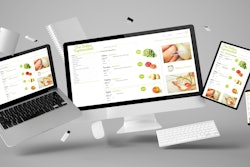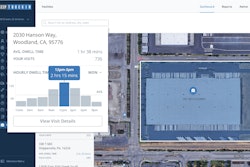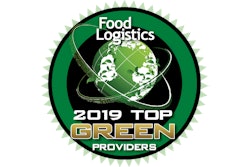
When it comes to honing your competitive edge, transportation management software might not be the first place you look for help; let alone route optimization technology.
But, used to the full, advanced route optimization software allows your food distribution company to compete with much larger organizations by giving you a smarter, more efficient delivery fleet. That’s especially important when your competition keeps consolidating, gaining the advantages of size.
Route optimization software doesn’t just cut costs by quickly and progressively reducing the number of miles driven and driver-hours paid (although it does that beautifully). It provides tools for keeping your transportation planning and delivery performance finely honed, transparent and cutting-edge in multiple ways.
Some of them might surprise you. Here’s a breakdown.
Deliver With Maximum Precision
Consumer demand for fresh food, on demand, has spawned a new set of distribution requirements: more frequent deliveries, unforgiving ETA precision, and margin-squeezing efficiency.
Route optimization software factors in all variables that could impact delivery timing, to create efficient routes in minutes, with highly reliable ETAs. Toronto-based catering company Marigolds & Onions adopted routing software to help it successfully meet a standard delivery window of just 15 minutes.
Provide Live Updates on Shipment Status and ETAs
Your customers are already getting text updates about their Amazon deliveries and tracking their approaching Uber drivers in real-time. Why should food deliveries be any different?
Route optimization software allows your customers to receive automated ETA emails and text alerts based on their exact communication preferences. No more anxious customers. No more “when will my order arrive?” calls.
Customers who know the night before when the truck will arrive, then get another update while it is en route, can schedule staff to receive the products, clear the delivery area and make room on the shelves. Good for them, but also good for you if your drivers can arrive, unload quickly and be on their way.
Smoothly Handle Volume Spikes
When demand for a product spikes unexpectedly, such as a surge in ice cream sales during a heatwave, your customers want to capitalize on the opportunity. For you, that may involve a reallocation of trucks and drivers on very short notice: that’s all white noise to retailers. They want the revenue—and they want agile supply chain partners that can help them get it.
If you don’t have the tools to respond quickly and methodically, frustrated customers may turn to your larger competitors for better service.
Advanced route optimization software allows you to plan routes fast and plan dynamically. Creating detailed route plans in minutes means you can flex to accept changing orders until much later in the day.
The software also helps you manage regular increases in volume, for events such as Thanksgiving or the Super Bowl. If you can accurately predict peak order volumes based on historical data, route optimization software can handle the rest—ensuring you make the most efficient use of drivers and equipment so that demand peaks are profitable for your customers and for you.
Prevent Fleet Operating Costs From Escalating
Every extra dollar spent on fleet operations is a dollar of profit lost—a big deal in the margin-thin food distribution business. The largest food distributors leverage sophisticated technology to manage their fleets, trimming 10 percent to 30 percent off total fleet operating costs. And so can you.
Routing software is a slam-dunk case of computers figuring out the thousands of possible combinations of orders, locations, trucks, drivers and time-windows far better than even the smartest human. For example, after automating its route planning process, national LTL carrier Frozen Food Express reduced its 660-vehicle delivery fleet by a full 10 percent.
Of course, route optimization software costs money, but the typical ROI is 3 to 12 months. After that, all the savings go right to the bottom line, and keep coming.
Ensure the Route Plans are Being Followed
Route optimization software isn’t just about planning; when it interfaces with data from a telematics system, you can also compare what is happening out on the road with the plan, as it happens.
Most advanced routing software will do this. With the ability to compare planned versus actual in real time, you can respond efficiently to problems or delays as they arise, and alert customers to ETA changes.
At the end of the day, you can learn exactly when and where routes deviated from plan and ask the driver to explain why, during his or her debrief. Maybe the staff at a convenience store weren’t able to leave the until the driver arrived. Maybe a big-box store’s receiving dock is snarled first thing every morning. Maybe the driver or dispatcher is skeptical of whether computer-generated plans will work “in the real world,” prompting a different route. It’s important to know.
Strategize by Asking “What If?” Questions
As service expectations have risen, so have complexity and costs. You need to be constantly thinking about what’s next—because your customers, and your competitors, most certainly are.
The good news is that route optimization software can help with strategy. It includes tools that simplify the process by calculating the cost and service impacts of business changes—before you make them. What if you changed the size or type of trucks in the fleet? What if you moved your warehouse to a new location, or opened a new one? What if you extended order cutoff times?
The right software can model every last implication of such changes, and do so within minutes, before you spend a dime.
Grow With Confidence (and Profits)
Without business growth, any company is destined for a slow death. The only question is how long it will take. A technology-enabled distribution operation aids profitable growth in a couple of important ways.
The first is retention. Food distributors that deliver efficiently and on time will keep the business they have. Those that don’t will lose customers, develop a poor reputation and eventually fold.
The second key to profitable growth is to make sure any new business you bring on is actually worth having. Sure, your team might be congratulating itself on signing a big new customer, but someone needs to ask whether the account will be profitable. An accurate cost-to-serve estimate can’t be answered by entering numbers into a spreadsheet, because no spreadsheet can handle the complexity involved.
Advanced route optimization software considers all the relevant factors in order to calculate a highly accurate cost-to-serve—before a single truck leaves the dock. In this way, you can ensure new business drives both revenue and profit.
It’s About More Than Food
For food manufacturers and distributors, it’s no longer just about the food. Competitive leverage is gained or lost based on how efficiently you get that food to market. It’s here that many small- and mid-sized businesses have failed to adapt, ignoring the opportunity to use technology to compete with the big boys. Don’t be one of them.

















